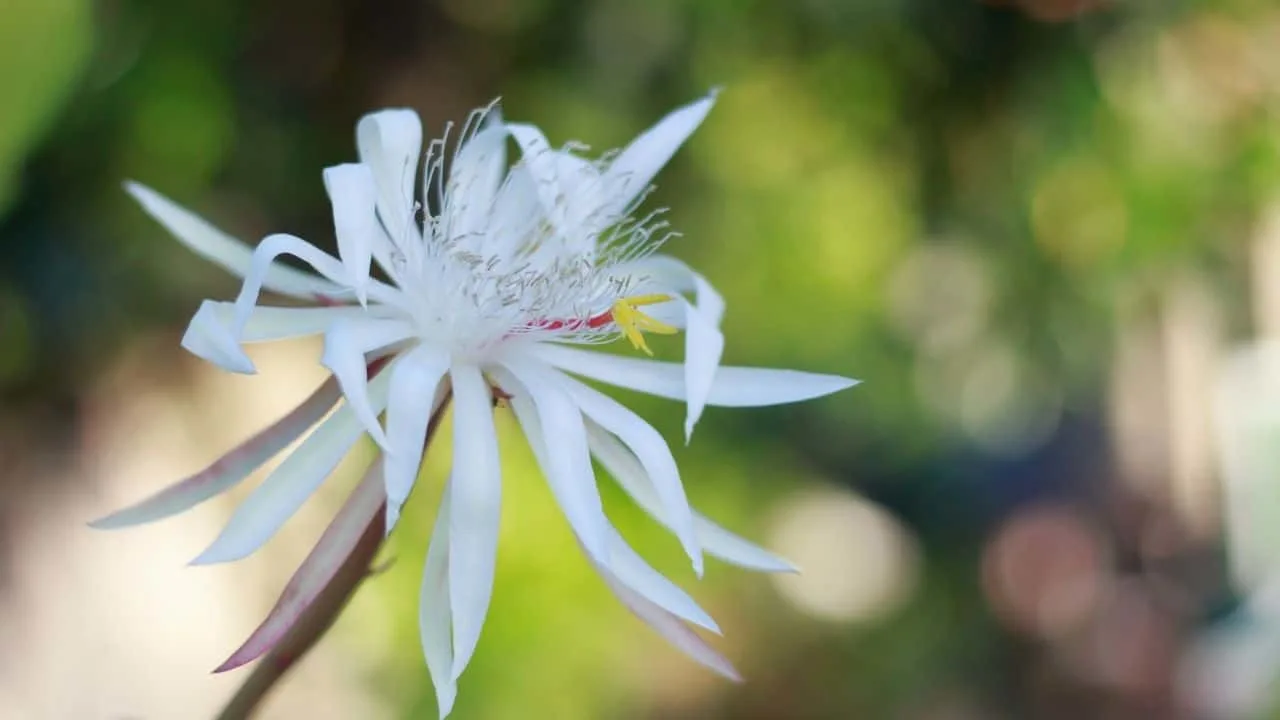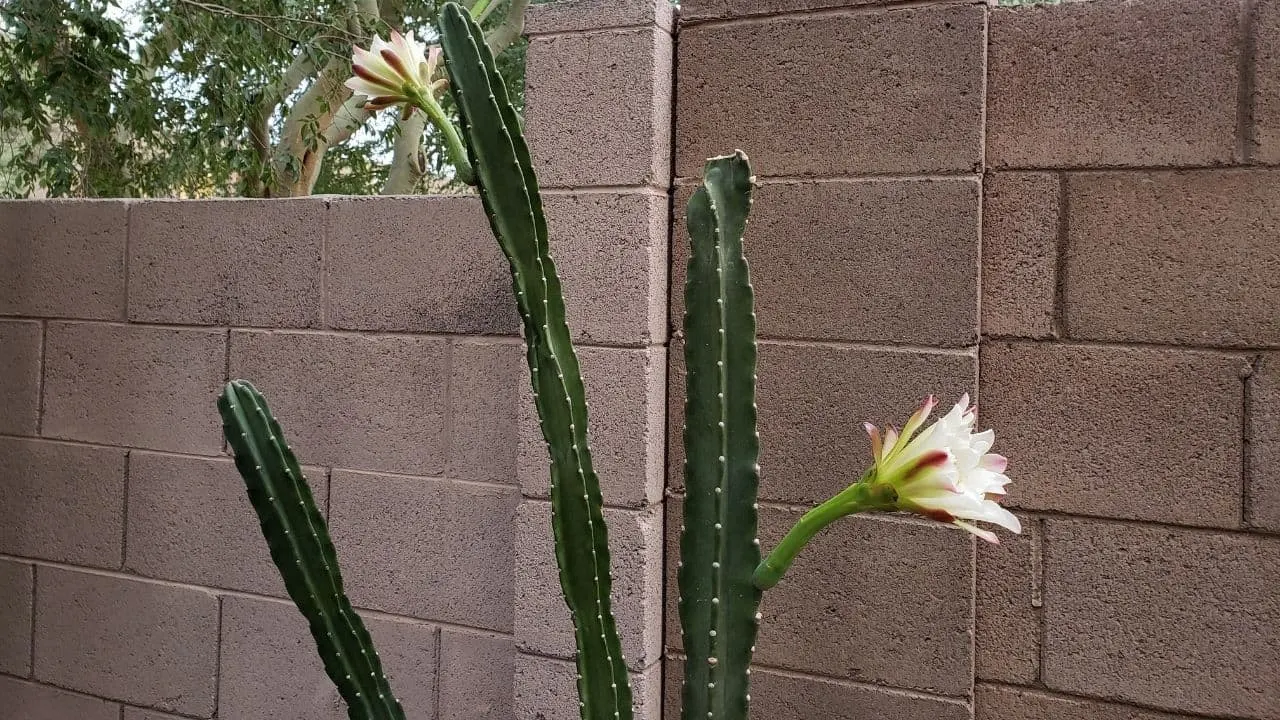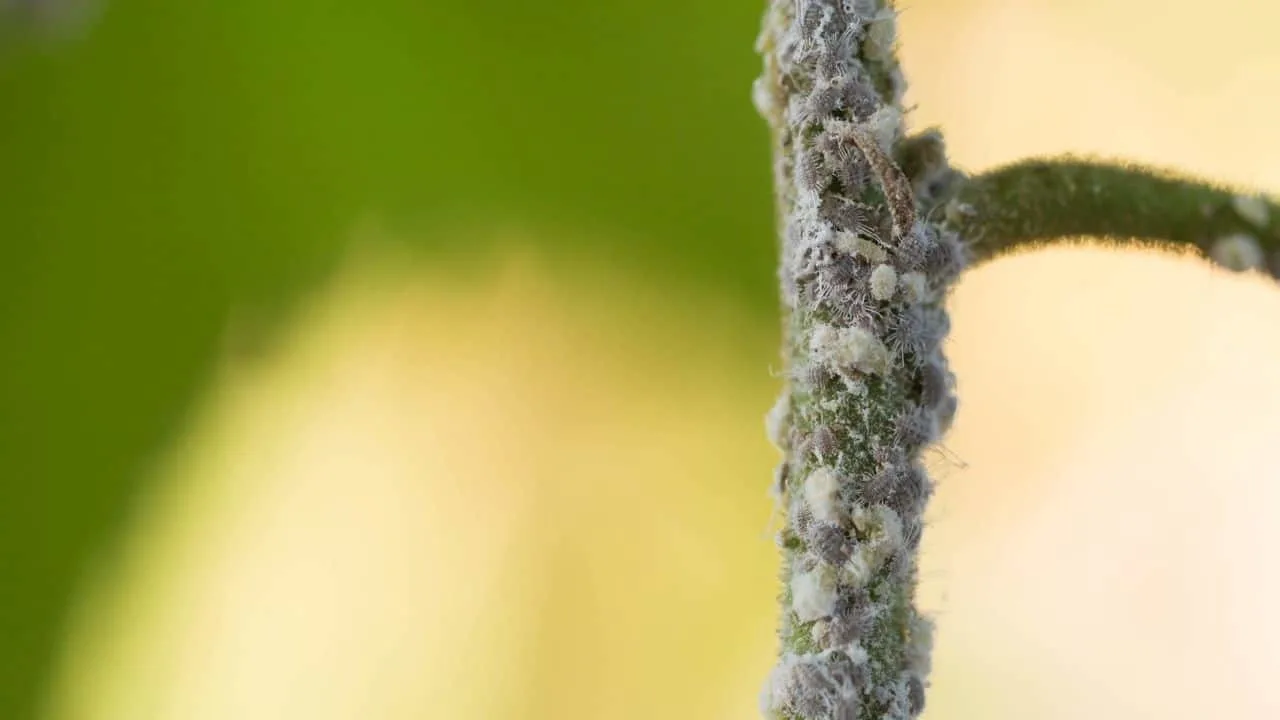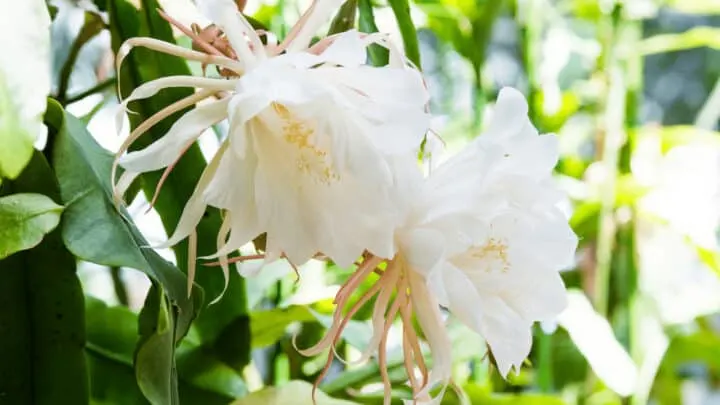One of the most widely grown epiphyllum species is the Queen of the Night plant, or otherwise known as Epiphyllum Oxypetalum.
This plant originated in South America and the southern part of Mexico. Most of these lovely plants are epiphytes, meaning they grow on the surface of other plants in their natural habitat.
Unlike parasitic plants, epiphytes rely on their surroundings for nutrients and moisture like the air and rain.
Its fragrant, white flowers can grow quite large, making EpiphyllumOxypetalum a popular plant. The secret to this plant’s popularity is that its flowers bloom only at night.
According to a study, Epiphyllumoxypetalum has wound healing properties.
Traditionally, people treated various problems like bloody phlegm and cough, shortness of breath, uterine bleeding, etc.
Table of Contents
Epiphyllum Oxypetalum Care Guide
Epiphyllumoxypetalum needs bright indirect sunlight. It grows best in temperatures ranging from 50 – 90 degrees Fahrenheit (10 – 32 degrees Celsius). Well-draining airy soil using perlite and orchid bark works best. Usually, it doesn’t need much water, mainly after 2-3 weeks, when the topsoil is dry. Humidity around 50% is fine. Use low nitrogen cactus fertilizer and fertilize every 2-3 weeks in summer and spring. Do not fertilize in winter.
Soil
For Epiphyllumoxypetalum care, the best growing conditions are well-drained, airy soils.
My preferred method is to mix a little perlite into a handful of orchid bark.
5.5 to 6.5 is an ideal pH range for the Queen of the night’s soil.
Peat moss, pine bark, and sandy soil will support its growth because these soil types have excellent drainage.
The roots of this plant don’t need much space in the pot; in fact, they tend to grow more effectively when the roots are bound in the pot.
Light
Plants such as this one grow in shaded areas of the jungle, meaning you should not place them in direct sunlight, particularly during the hot afternoon hours.
So be careful not to overdo the direct sunlight, but keep in mind that too much darkness may also cause them to not bloom.
However, a few rays of the sun won’t affect Epiphyllumoxypetalum care. Due to their sensitivity to sunburn, positions that offer more than two hours of direct sunlight should be avoided.
Watering
Don’t wait for the soil to completely dry before watering it. As a result, the plant may get damaged, and its roots can be prevented from growing.
It is vital to keep the soil of these plants a little moisturized, as they are incapable of withstanding prolonged periods of dryness.
For proper Epiphyllum oxypetalum care, ensure the soil drains well so the water doesn’t pool at the bottom to cause root rot.
For areas that are intensely hot and dry during summers, I recommend watering your plant every week. It is generally recommended to make sure the soil’s top 2 inches are completely dry first before another watering session.
Choosing pots that have drainage holes will allow the drainage of excess water, which is an essential part of Epiphyllum oxypetalum care.
Water less frequently during spring and fall — once every 7-14 days.
In the winter, water every 2-3 weeks. The roots of mature plants require a little amount of water than those of young plants.
For Blooms

Plants 3 to 5 years old and older can bloom by restricting water from November to March.
Furthermore, the winter temperatures should also be lowered (see Temperature requirements below). Continue watering it once to notice flower buds forming.
Temperature
The best temperature range for Epiphyllumoxypetalum care is between 50 and 90°F (10 – 32 °C). Extremely low temperatures, as well as vents with drafts, should be avoided.
Similar to most houseplants, Epiphyllumoxypetalum also performs best in temperatures that are most suitable for humans.
Although it can withstand low temperatures, I would recommend not keeping it in temperatures below 40°F (4.4°C) if you want proper Epiphyllumoxypetalum care.
Humidity
The humidity levels in a normal household are suitable for Epiphyllumoxypetalum care. However, 50% humidity levels work best for them.
Night Blooming Cereus can also tolerate low humidity, so it is a good choice for those who don’t use a humidifier in the house.
Fertilizer
Low nitrogen fertilizer is suitable for Epiphyllumoxypetalum care, as nitrogen-rich fertilizer can severely affect blooming.
Opt for fertilizers that are best suited for cactus as they will also work well for the Queen of the night cactus.
Fertilize every 2-3 weeks in summer and spring as these are the blooming times.
Do not fertilize your plants in winter as they go dormant during that time, and you won’t need to fertilize them.
Propagation
Another reason why I love Night Blooming Cereus is that it is so easy to propagate. I always go with stem cutting.
It’s also possible to propagate cuttings with seedlings if that’s your thing.
I feel comfortable with using soil. NBC cuttings have never failed to grow when using soil, so that’s the method I will continue to use.
However, you should go with the method that works best for you.
Pruning
Pruning is essential for Epiphyllumoxypetalum care. Night Blooming Cereus has long shoots that allow it to move around in its natural habitat.
If you think they’re occupying too much space, you can prune them back. You don’t need to be concerned; the cuts won’t affect the plant’s growth because new shoots will grow from them.
Moreover, Epiphyllumoxypetalum care also requires cutting away any decayed or dead parts of the plant so that the plant’s energy is directed toward healthy growth.
Flowers
Night Blooming Cereus aren’t the easiest plants to bloom, especially if you haven’t done it before. They won’t bloom as new plants and most likely start blooming between 3-5 years.
The more mature a plant gets, the easier it will be to manipulate its watering and temperature in the winter to get those wonderful blooms.
This flower has 25-30 straight, white petals that are very fragrant and delicate-looking. White flowers resemble stars or spiders, and yellow tinges can be seen on the petals.
The flowers reach a maximum of 15cm (6 inches) in length and can be quite large.
Towards the end of the evening, mainly 8:00 – 10:00 pm, the flowers start opening, get fully bloomed between 12:00 – 3:00 am and then quickly close just before dawn.

Catching it in full bloom can be tricky, but it’s a truly beautiful sight to behold.
The right temperature and proper Epiphyllumoxypetalum care can make your plant bloom. Moreover, potted plants are more likely to bloom.
Growth
With proper Epiphyllumoxypetalum care, they grow rapidly in nature.
They grow as a shrub around 2 meters tall, so they’re good for pots, courtyards, and beneath windows.
Potting and Repotting
Use fresh soil and a pot with adequate drainage holes for potting.
Epiphyllumoxypetalum care doesn’t require frequent repotting. I would recommend repotting your plant every 7 years.
When the plant is pot-bound, that’s when the blooms start to occur.
Following repotting, wait a few days before resuming your regular watering schedule so the roots can recover from the disturbance.
Toxicity
ASPCA says that the Night Blooming Cereus is non-toxic to pets.
However, I would advise keeping NBC out of the reach of children and pets if they tend to touch or eat it as it can be a choking hazard due to its rough texture.
Step-by-step Propagation of Epiphyllum Oxypetalum
By Cutting
- Take a few mature leaves from the NBC and store them in a cool, dry place. Ensure that the cutting is at least 10-15cm long (4-6 inches).
- Wait a few days until the cuttings form calluses before reusing them. When the cuttings are planted, the calluses will prevent them from rotting.
- Prepare potting soil that drains well.
- Use a container with drainage holes to place the soil. It shouldn’t be too large for the cuttings.
- Plant the cuttings into the soil at the cut end.
- Place the plant in bright light and water when you feel the soil is dry, mainly after 7-10 days, for appropriate Epiphyllumoxypetalum care.
By Sowing Seeds
- Add the cactus compost to a container, and scatter the seeds evenly over it.
- Lightly mist the compost with a sprayer.
- Apply fine grit as a top-dressing.
- Put the pot in a propagator or cover it with a clear plastic bag and keep it at 70°F (21°C).
- After the seeds have germinated, remove the covering.
- Moisten but not drench the compost.
- Seedlings can be pricked out when they have grown large enough to handle comfortably and become crowded.
- Take some fresh, well-draining soil and put it in a container.
- Place the seedlings in the pot and keep them in a bright location.
Common Problems with plant Epiphyllum Oxypetalum (Mainly pests)
Pests

The most common insect complaint related to this plant is mealy bugs. Other potential threats include aphids, scales, and mites.
Until now, none of my Epiphyllum plants have been attacked by pests, so I assume they aren’t very insect prone.
Read How To Get Rid Of Mealybugs – Best Remedies 101 to get rid of Mealybugs and provide proper Epiphyllumoxypetalum care.
Root Rot
Root rot is a serious problem characterized by yellow lower leaves, stunted or softened growth, and stem collapse.
Get the plant from its pot to examine its roots.
Proper Epiphyllumoxypetalum care results in a healthy plant with yellow roots, but brown, mushy sections are a sign of overwatering.
Read How to Save a Plant from Root Rot — Top Tips for more details.
Brown Rotting Base
Overwatering can also cause a brown, rotting base.
For plants whose trunks have rotted over, cuttings must be taken to preserve the remaining sections.
Diseases
Epiphyllum does not seem to be prone to many diseases. You will encounter diseases almost 90% of the time caused by soil that holds a lot of water.
Most commonly, these diseases are fungal leaf spots or root rot, which can threaten the overall health of your plants.
Read How to Revive an Overwatered Houseplant — Actions to Take for more details.
Tips to keep Epiphyllumoxypetalum Problem-free
Follow these tips for proper Epiphyllumoxypetalum care:
- Keep the plant in a fairly warmer environment.
- Water only when you feel that the topsoil is dry, mainly after 7-10 days.
- Watering your plants every 2-3 weeks during the winter is recommended.
- Never overwater your plants, or their roots will be rotten.
- Only 2 hours of direct sunlight is recommended; more than that will result in sunburns.
- Keep your plant in indirect sunlight most of the time.
- Fertilize and propagate in the spring and summer as these are the growing seasons for most houseplants.
- Cut off the stems and any damaged leaves as soon as possible.
Frequently Asked Questions About Epiphyllum Oxypetalum Care Guide
How often does Epiphyllumoxypetalum bloom?
The night-flowering Epiphyllumoxypetalum has a great sense of drama. It blooms only once every year for one night only.
How can I make my Epiphyllumoxypetalum bloom?
The cactus should be placed in an unheated area with a temperature above 40°F (4.4°C) during the late winter to stimulate bloom production. Make sure it receives the same indirect light. Return the plant indoors after the chilling period is over.
What soil works best for Epiphyllumoxypetalum?
Epiphyllumoxypetalum needs sharp-draining growing media. They will thrive in cactus soil amended with grit or perlite. Alternatively, you can mix two parts of loam-based compost, two parts of grit/perlite, and one part of peat-free, multipurpose compost.
What is the best fertilizer for Epiphyllumoxypetalum?
To boost the soil’s fertilizer, better use a fertilizer. Replenish the soil with organic material, or use nutrient-rich liquid houseplant fertilizers with 20-20-20 ratios or fertilizers with less nitrogen. Do this once monthly during the seasons of summer and spring.
Conclusion
Epiphyllumoxypetalum care is quite challenging, especially if you want it to bloom, but it is worth trying.
Growing the Queen of the night flower is a good idea if you are more inclined to grow flowering plants. Observing this flower bloom will surely bring you a great deal of joy.
However, it is important to provide this plant with the correct light, soil type, and other requirements for it to bloom.

Daniel has been a plant enthusiast for over 20 years. He owns hundreds of houseplants and prepares for the chili growing seasons yearly with great anticipation. His favorite plants are plant species in the Araceae family, such as Monstera, Philodendron, and Anthurium. He also loves gardening and is growing hot peppers, tomatoes, and many more vegetables.


